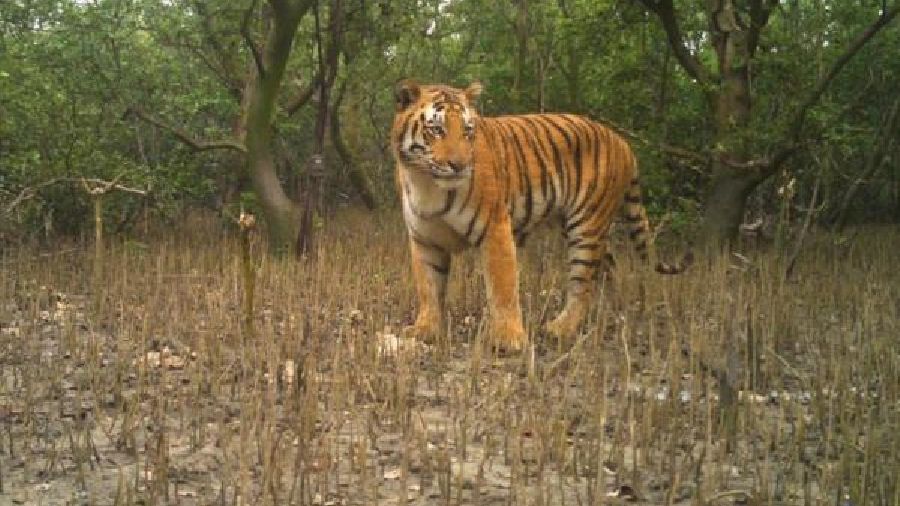The big cat count in the Sunderbans has hit a century, a report on tiger census across the country that was released by Prime Minister Narendra Modi on Sunday said.
The report, titled Status of Tigers 2022, was released by the Prime Minister at a programme in Mysore to commemorate 50 years of Project Tiger.
“There are at least 100 tigers in the Sunderbans. The actual number would be more because the estimate does not include cubs as they have a high mortality rate,” said a state forest department official. In the Sunderbans, the tiger count hovered around the 96 mark in two successive state-level censuses, in 2019-20 and 2020-21.
The report says 100 different tigers were photographed across the Sunderbans — in the Sunderbans Tiger Reserve and the South 24-Parganas range. The country-wide estimate of big cats is conducted every four years. A senior official in the state forest department said at least 100 different tigers were photographed in the Sunderbans during the 2022 counting exercise. Trap cameras were installed at strategic locations in the mangrove forests to capture the images of the tigers and identify them by their stripes.
Soumitra Dasgupta, principal chief conservator of forests and head of the forest force in Bengal, said the numbers were indicative of the fact that despite the occurrence of two cyclones — Amphan in 2020 and Yaas in 2021 — tigers in the Sunderbans have been able to thrive and their prey base has remained more or less intact. During the two cyclones, large tracts of mangroves and other flora, which include food for herbivores like deer and wild boar that tigers feed on, had been damaged. In 2018, 88 tigers had been recorded in the Sunderbans in the all-India tiger census.
“This (the thriving tiger population) has been possible because of continuous conservation efforts and replantation of mangroves that had been damaged during the cyclones,” said Debal Roy, chief wildlife warden of Bengal.
Pradeep Vyas, former chief wildlife warden of West Bengal who spent many years working in the Sunderbans, said continuous conservation efforts over the past two decades seemed to have paid off.
“In the 1990s, it was unusual for a family wedding (in the Sunderbans) not to serve deer meat. Killing wild animals was banned then, too, but people would rampantly kill them across the Sunderbans. Now people are less dependent on poaching for food as joint forest management committees have created jobs and awareness levels are high,” Vyas said.
Vyas, however, said the Indian Sunderbans could accommodate around 130 to 150 tigers.
“It would take at least two more decades of conservation to have that many animals if climate change does not have a devastating impact,”said Vyas.

